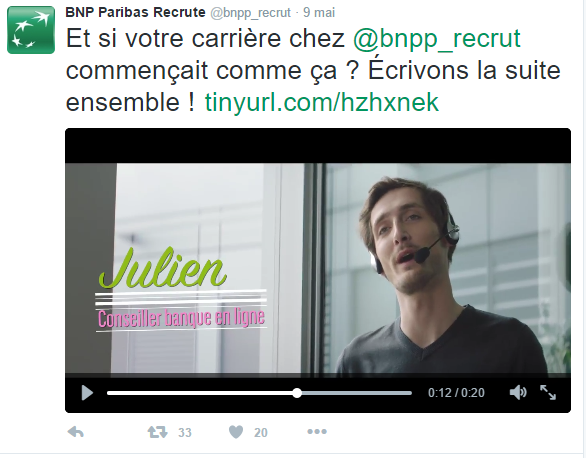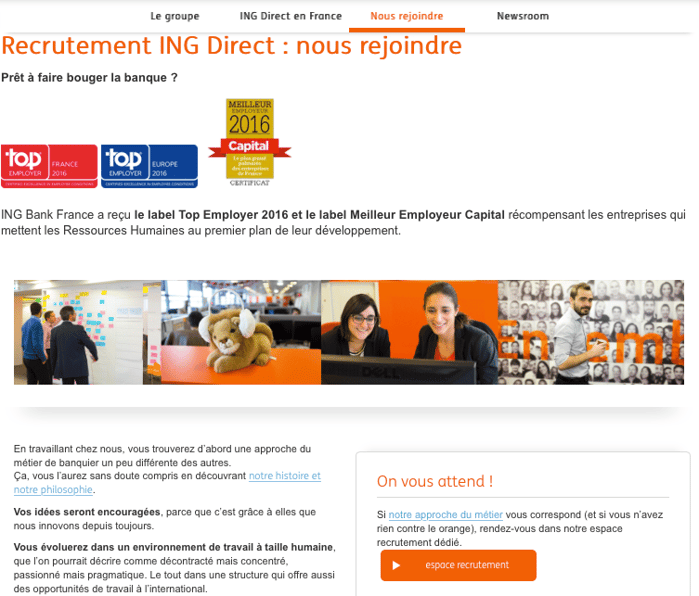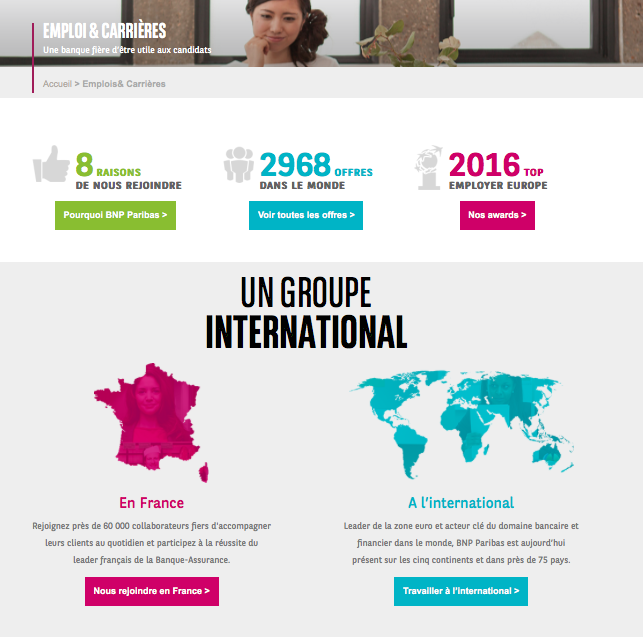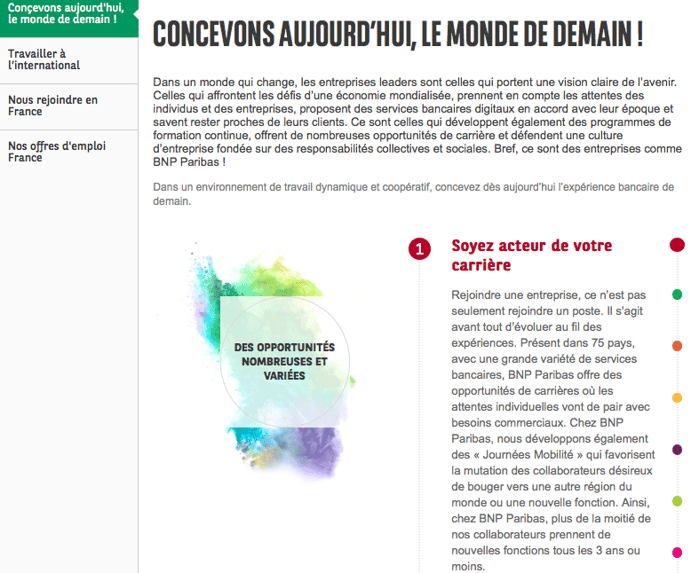The content a company publishes on its website is like its facade: it creates an immediate impression upon arrival.
For the reader, what is written and how it is written says a lot about that company and its values.
Let's compare two companies and their approaches in terms of content strategy for promoting their employer-brand: ING Direct and BNP Paribas.

A nice first impression no?
To better recruit, most companies know that it's in their best interest to animate their website and be present on social networks.
They have understood the usefulness of communicating regularly with their community in a recruitment optic, if possible on topics a little more diverse than just job openings.
With this in mind, there is one essential -and tangible- reason for companies to design content: Promoting their employer-brand image.
Early employer branding...
It is one of the most invaluable assets for business development. Maintaining good brand image can have a very positive effect on the quality of hires.
Inversely, not taking care of it can have disastrous consequences that pay off in cash.

Investing in employer brand development saves a lot of money.
According to a "Winning Talent" study, published on LinkedIn, not investing enough in one's reputation (or employer brand) to attract potential candidates comes at a high cost to companies.
Those that are failing in image may have to pay up to3,500 euros more per employee per year than those with a good reputation.
The bill can mount to an increase of 5 million euros on average per year for a company with 10,000 employees and more, the study says.
Faced with this reality, brands are vying to (re)write their story, thanks to a storytelling adapted. Older brands often seek to demonstrate that they are still in the game.
In contrast, some startups like to highlight their identity as a talented startup and a taboo breaker.
The example of the banking sector
From the point of view of the business itself as well as from the point of view of brand management (employer or not), the banking sector is emblematic.
On the one hand, there are so-called traditional banks, which have digitized with varying degrees of success, and on the other, so-called "pure players" online banks, which cater to customers who are ready to take the all-digital leap.
At the recruitment level, the profiles sought are quite similar. The bulk of the battalion is on the customer advisor side.
But the tone used to address them is often quite different.
Let's compare the approaches of two industry "behemoths" that are BNP Paribas and ING direct
BNP Paribas, one of the "old three" rather on the cutting edge
BNP offers digital banking services in tune with the times and knows how to stay close to its customers.
The four pillars of its corporate culture, which underpin its employer brand are Agility, Customer Satisfaction, Culture of Compliance and Openness.
These are markers of its seriousness and respectability. In addition, the bank emphasizes its international dimension and highlights its presence in the "Top Employers Europe 2016".
The brand conveys its values through visual content published on its website.
BNP Paribas insists on its values and reminds us of its strengths to improve its employer brand: it's a great company and every employee has a place there and can grow.
This is serious and is how the brand presents its employer brand DNA.
On its website, the brand has created a user journey, punctuated by the presence of content in various formats.
If you look at the publications on BNP's Twitter Careers, you'll notice that it provides content regularly and that a team of very good Community Managers run the account daily.
Activity is also strong on other social networks.

Drive successful content production on social media to effectively convey your employer brand.
Conclusion: Despite being nearly two centuries old, the BNP Group is taking its employer brand seriously on the Internet by intelligently combining storytelling that takes into account its past and communication towards the new generation.
ING Direct, an ambitious pure player
On its Careers page, ING direct subtly and succinctly states that it has the Capital Best Employer label from the banking industry-which is almost true, it's actually second only to Caisse des Dépôts.
The tone is quirky: " If our approach to the business fits you (and if you have nothing against orange), go to our dedicated recruiting space ".

Two major players and two very different strategies!
ING Direct relies on photos of its offices to show the work environment, always with a humorous tone.
Having only 2 physical offices in Paris and Lyon, it shows the ultimately very classic functioning of its teams (in an Open Space).

Now, let's look at the refresh rate of ING direct's content on social networks. Problem: it appears that the Twitter account @ingbankfranceRH is only updated every 15 days! [Edit: Between the time this article was written and its publication, a lot of content was published on this account! However, the history shows a too low publication frequency]
Conclusion: ING Direct may have only been established about 15 years ago, but it is not exemplary in its approach to developing employer-brand on the Internet. Paradoxically, it relies less on social networks than BNP Paribas.
Each in their own way, these two banking companies show their assets to future talent.
They are leveraging their career pages to develop their identity to serve as a tool for a candidate looking to learn more about them and later prepare their application by being better informed.











